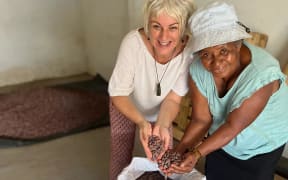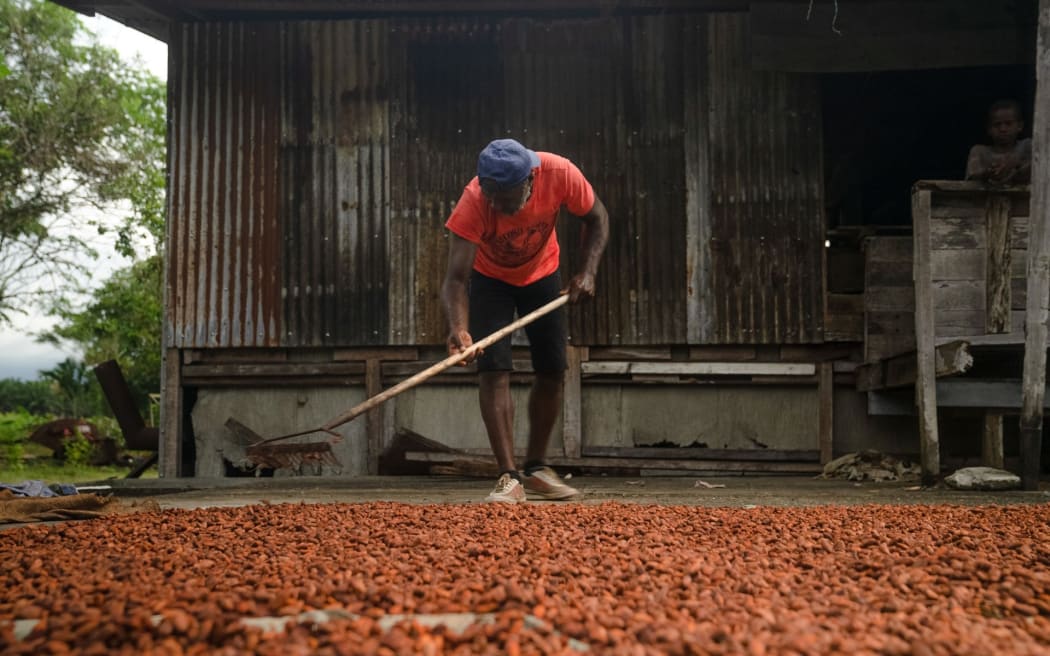
Brown says the cacao bean is actually one of the highest sources of magnesium, plant- based iron, antioxidants, so is extremely healthy. Photo: Supplied
The price of cacao, or cocoa, has soared in recent months, as chocolate lovers everywhere will attest.
In fact, the price has doubled in a year and the impacts are dramatic.
Oonagh Brown, who styles herself the Cacao Ambassador, and while importing cacao, has also been working alongside Pacific communities to help them improve the quality of their product, and to raise output, sees both the positives and negatives in the price rise.
Don Wiseman spoke to her on the effects of the surge.
Oonagh Brown (OB): Soin the cacao sector and in the Pacific there's two real markets; one is the bulk market - the market that buys and doesn't really care about the quality, the moisture content, and then there's the boutique market. Now the boutique market normally paid double what the bulk market was paying. Now, the bulk markets paying even more than what the boutique market was paying a year ago.
Don Wiseman (DW): For Papua New Guinea, Bougainville, Samoa their cacao largely goes to bulk?
OB: Yes, specifically Papua New Guinea today, a huge volume goes through the bulk. Same with the Solomon Islands. We've been endeavouring to raise the quality, so there's a higher price, and in a sustainable way. The boutique market is much more sustainable.
It's more [so] working with ethical chocolate companies and buyers who want long term difference where the bulk market is supplied into the commodities market.
DW: Okay, so this might mean the cheapest chocolate is suddenly as expensive as the dearest chocolate?
OB: Exactly, it is. But also what it means right now is that this price, that the commodities market are willing to pay, it's actually what the farmers should be paid for being a cacao farmer. It's what the farmer should be paid by kilogram. So it's giving a realistic indication of what chocolate should cost. So the chocolate industry and consumers have been benefiting, but the farmers haven't. And that's been the massive gap. So right now this price is actually reflective of a real price at a farmers irrelevant of quality.
DW: So $6.50 a kilogramme - that's what they should get?
OB: That's what they should get and then premium chocolate can be higher than that. But that's not at the farm gate. In terms of that, that's what freight on board would be, so then the aggregators will pay slightly lower price at the farm gate to then ship it to the port.
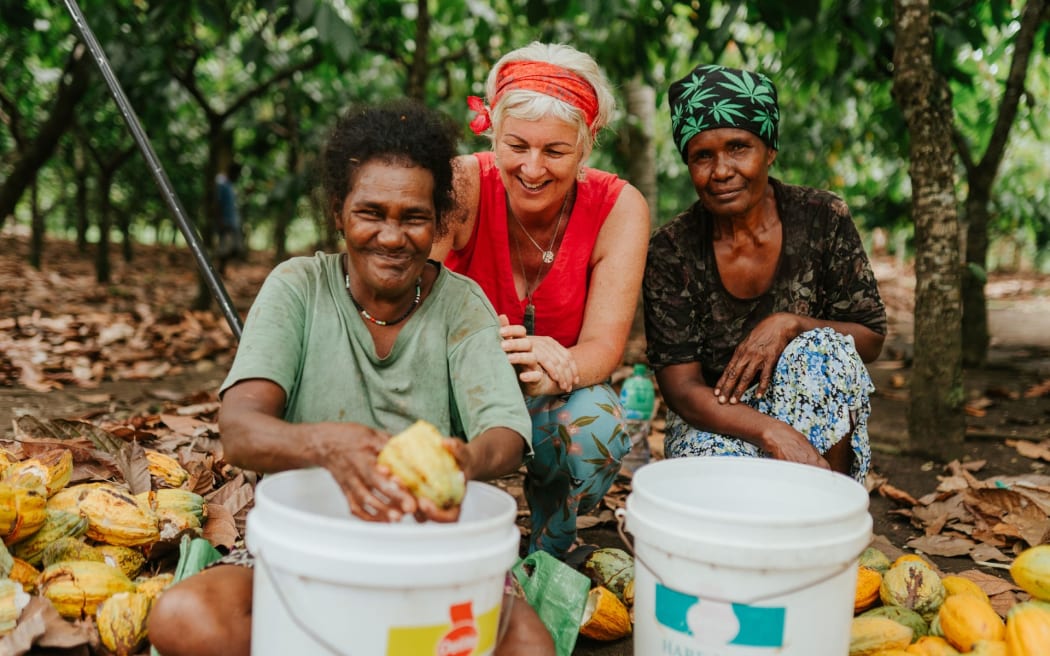
Brown says every farming community to understand the history of cacao. Photo: Supplied
DW: Alright, so these people who haven't had any money in a long time are getting some, but it's having a lot of negative impacts.
OB: Yeah. I like to stress that on one level, it's really positive in terms of actually a real price being paid. But also then this is going into communities and cultures where they're not used to having a lot of money. And if that money can be reinvested into the farm, into rehabilitation of trees, into long term expansion of the farms, that's fantastic.
But when you haven't been paid a good price for a very long time, like any of us, we certainly have money in our bank account, we're going to want to spend it and enjoy that.
DW: Is that what's happening?
OB: That is definitely what is happening. But also there's a lot of buyers coming out of the woodwork, I would say, who weren't buying for a long time, they might have an export licence, and now they're going out there, they're buying up beans that would have been bought by ethical long term strategy projects. So there's a lot of wild west happening - that's not healthy. This is what happens when you have a sudden peak price in any commodity. All kinds of non healthy play happens.
DW: So the solution as you see it, is what?
OB: Well, the first thing is to hope because consumers have such a voice of power. If consumers understand that cacao farmers should be paid a healthy price like around $4.50 to $5.50 New Zealand dollars, for example, per kilo, then, they have to pay more for chocolate and to enjoy chocolate for it to be at any level ethical. So that this price increase stays, it doesn't drop there. What we've seen happen 10 years ago, the price goes up crazily, and it drops. It doesn't stay at this price level. Now we need this price to stay and for the chocolate world to change in terms of less is more, and high quality. Not just high quality, but for consumers to understand what it really is to be a cacao farmer and to be paid a proper price.
But what happens is that like there's massive stores of cacao around the world that we don't even know about because it's bought in futures, it's stored in warehouses, it lasts for years, and those stores are depleted. So there's massive buying to refill those stores. Now come 12 to 18 months time, if those stores are full, what we'll see is a price crash and we also have a lot more farmers getting involved, starting to harvest their trees because they're actually getting a real price. We don't want to see that price crashing in 18 months. We want this to stay consistent. And in order to do that, because we're talking about the world stock exchange market, right, so it goes up and down in everything, all shares, everything. So specifically for the Pacific, what we want to do is over the next 18 months work with the farming communities to increase their quality so even if the world stock exchange market goes down, we will still be able to get that price for the farmers.
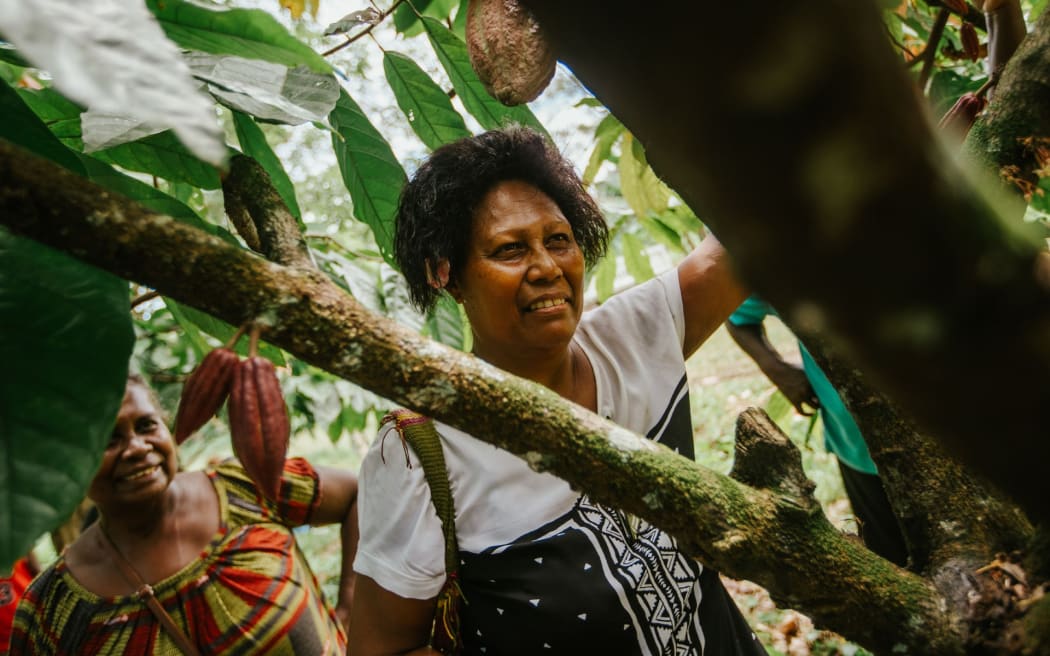
Brown says the cacao bean is actually one of the highest sources of magnesium, plant- based iron, antioxidants, so is extremely healthy. Photo: Supplied
DW: Because you'll be able to sell at boutique prices?
OB: Exactly, right. That's a long term strong strategy that's not affected by the world stock market because you've got buyers who build relationships and who look at the long term and actually care about the farming communities on the ground.
DW: We've had a report recently from the Australian National University and they've been looking at cocoa farms in PNG, and come to some grim assessments in terms of it's a very old labour force, the youth are disinclined to be involved, the quality of the plants, of the trees, is very poor. The industry is teetering and has been teetering for a generation. You no doubt see that sort of thing now, what do you think needs to happen?
OB: I see that across the world because people ask me, 'are we going to run out of cacao' and I say 'we'll run out of cacao farmers first' because the average age is late 50s and the youth are not interested because it's hard work in the heat of the tropics. And traditionally the price hasn't been worthwhile.
DW: So a decent price will make all the difference.
OB: One, decent price, yeah, but price is not everything. What has to also happen is pride and connection to their crop. What happens throughout the Pacific, apart from Samoa, who use their own cacao and have their own local market. You go to a stand in Samoa, like a market stand and you'll see cacao beans for sale, and they drink what they call Cocoa Samoa every day. That does not take place in Papua New Guinea, Solomon Islands and Vanuatu. So these farmers in the villages are meant to harvest quality cacao and put it in a sack when they don't know what that is, where it's going, what chocolate is, or even that Milo contains those beans. So just such a disconnect so they know good pineapples, good pawpaw, good taro, because they consume it and they ask a proper price for that. But with cacao, they have no connection whatsoever to what that crop is. There's no pride,
DW: But there are efforts and they've been underway for a while to produce chocolate and we've had chocolate events in Bougainville and Solomon Islands, and I think you also were introducing them to a version of Milo.
OB: Yeah, so for me, it's not just about chocolate and the understanding it goes to chocolate overseas, which can be called like white man's food. It's about them understanding it's part of their diet, it can be part of their diet. The cacao bean is actually one of the highest sources of magnesium, plant- based iron, antioxidants, so is extremely healthy. And when they are given the opportunity and the invitation to have it themselves, it just changes everything because the relationship changes. That's one of my passions and endeavours is to have the potential for every farming community to understand the history of cacao, the health benefits and how they can have it in their village, without any special equipment.
We roast the beans over fire, we peel them, we make cocoa tea from the shells and then we hand pound it into a paste and if you add sugar it becomes chocolate. If you don't you add, like we go on we get wild cane sugar, we squeeze that into the pile of bubbling cacao or chocolate and we make local Milo in effect. And this is the first time that these villagers have tasted their own cacao even though some of them have have harvested for over 100 years. Which is sad but also the potential for change.
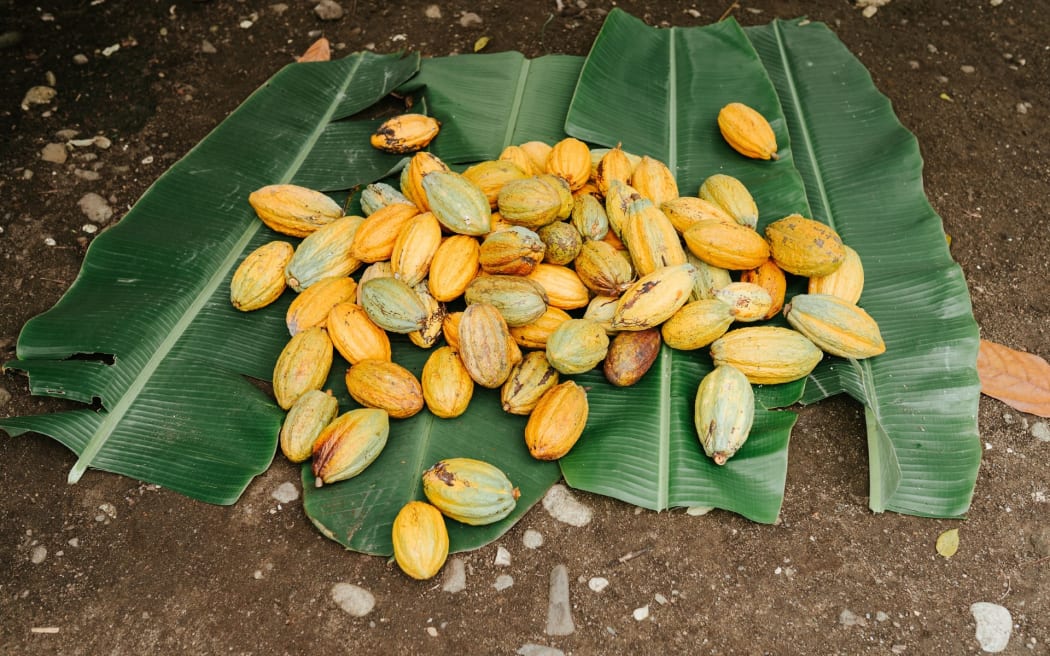
Brown says the cacao bean is actually one of the highest sources of magnesium, plant- based iron, antioxidants, so is extremely healthy. Photo: Supplied

